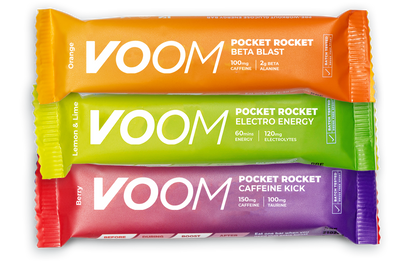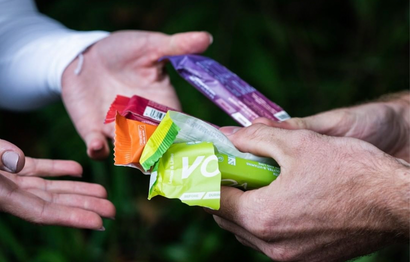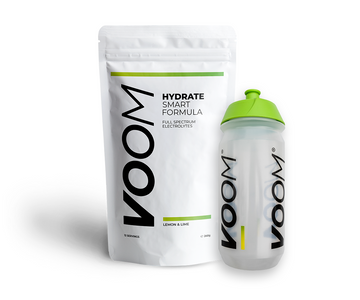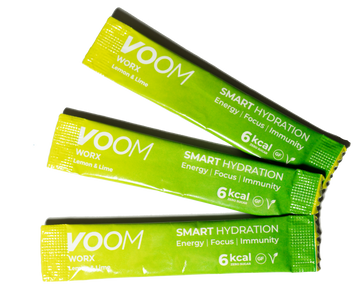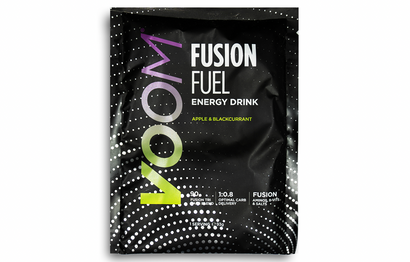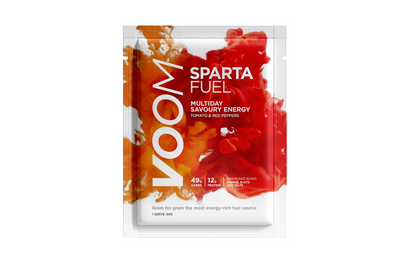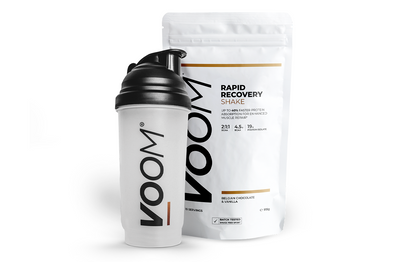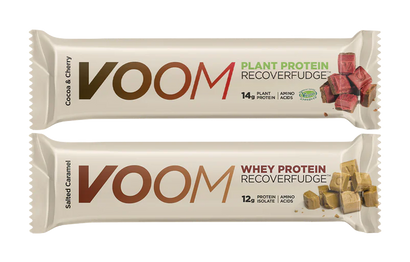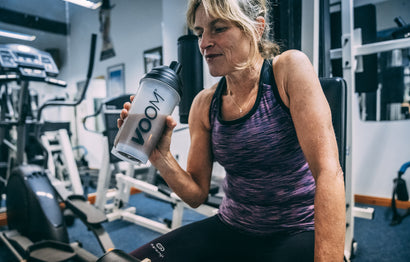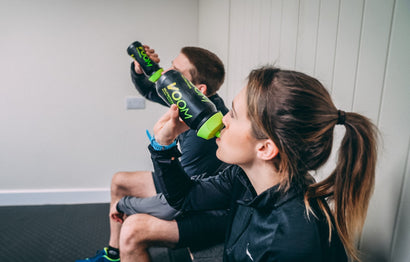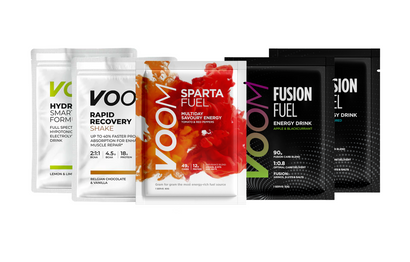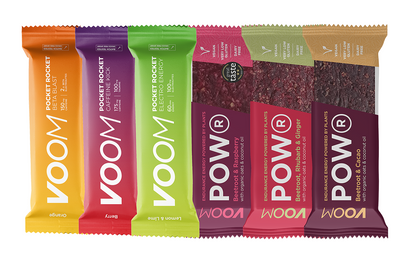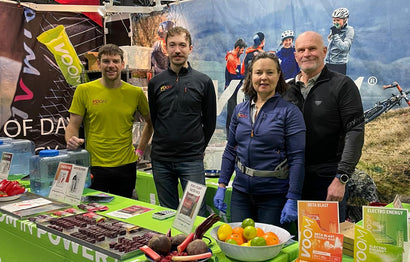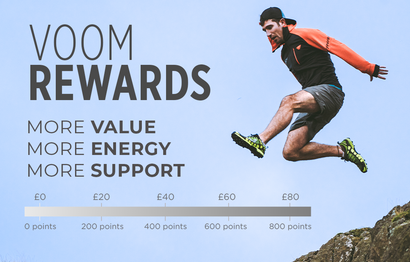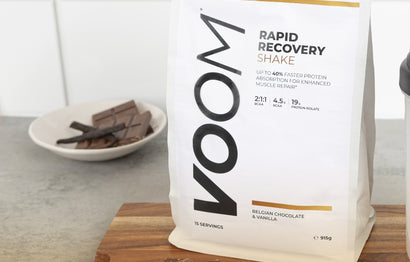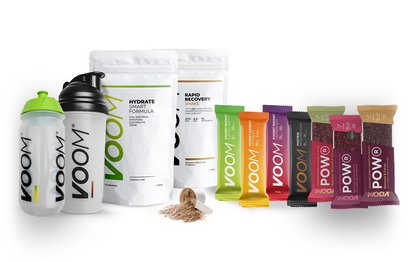What are B-Vitamins?
B-Vitamins are a type of micronutrient which are essential for ensuring normal and optimal body function. The body can’t produce B-Vitamins (or any vitamins) and therefore they must be consumed in the diet. B-vitamins are especially important for sports performance, namely thiamin, riboflavin, niacin, pantothenic acid, Vitamin B-6, B-12 Vitamins, and folate.
What is the B-Vitamin complex?
The B-Vitamin complex is often used to refer to all types of B-Vitamins as a whole. Each variant plays its own role in supporting normal body function and different B-Vitamins are found in different food types.
What do B-Vitamins do?
The body uses B-Vitamins to convert carbohydrates and proteins into energy and they also play a key role in cell production and repair. B-Vitamins are involved in manufacturing enzymes in the body, hormone production, protecting the sheath around nerve cells, creating new red blood cells and helping deliver amino acids such as L-Leucine into the muscles to help rebuild muscle. In summary, B-Vitamins are vital in combating the stress generated by physical activity and maintaining optimal function of the body (Soares et al., 1993).
What is the daily recommended intake of B-Vitamins?
B-Vitamins are vital for maintaining the health of physically active individuals, however individual requirements for B-vitamins are highly variable depending on factors such as age, height, weight, gender, exercise intensity / type and sweat volume / composition (Manore, 2000; Maughan, 1999). Even a small deficiency in Vitamin B can significantly reduce performance and recovery (Van der Beek et al., 1997; Telford et al., 1992).
Where do B-Vitamins come from?
B-Vitamins are found in many of the foods we eat and typically sufficient amounts can be consumed in your normal diet. However, if you train regularly at a high intensity or are following a restricted diet for health or performance, you may fall short. For those who encounter a deficiency, B-Vitamin supplements are available which can boost the intake, but this should only be done with the advise of a doctor.
What foods contain B-Vitamins?
- Vitamin B1 (thiamin) - lean pork, yeast, legumes, and enriched cereals & bread.
- Vitamin B2 (riboflavin) - dairy products, eggs, green leafy vegetables, lean meats, organ meats, legumes, nuts, fortified breads & cereals.
- Vitamin B3 (niacin) - Liver, chicken, salmon, beef, and eggs. Whole grain products, legumes, carrots, broccoli, asparagus, tomatoes, dates, avocados, and leafy green vegetables.
- Vitamin B5 (pantothenic acid) - animal proteins, avocado, broccoli, kale, and other vegetables in the cabbage family, eggs, legumes, lentils, milk, mushrooms, organ meats, poultry, white and sweet potatoes, whole-grain cereals and yeast.
- Vitamin B6 - beans, chicken, fish, dark leafy greens, bananas, papayas, oranges, and cantaloupe.
- Vitamin B9 (folate) - many fruits and veg, whole grains, beans, cereals, and fortified grains.
- Vitamin B12 - fish, poultry, meat, eggs, and dairy. Nutritional yeast, miso, seaweed, fortified cereals, and enriched soy or rice milk are also good source of B12 if you are vegetarian/vegan.
What are the different types of B-Vitamins? A detailed look …
Thiamin – B1
Thiamin is central to the mobilisation of carbohydrates, fats, and proteins for energy production during aerobic activities (Manore, 2000; Maughan, 1999). It is thiamin pyrophosphate (TPP) found within thiamin that is crucial to several key reactions during energy production in the body’s cells. Specifically, TPP converts pyruvate to acetyl-COA during the production of ATP (energy) in the mitochondria. Therefore, supplying the body with sufficient thiamin is crucial to ensuring there is sufficient capacity to continue to metabolise carbohydrate, fats & proteins and produce energy to continue exercise.
Riboflavin – B2
Riboflavin is essentially two important cofactors; flavin mononucleotide (FMN) and flavin adenine dinucleotide (FAD). These two cofactors play vital roles in the transfer of electrons during the aerobic production of ATP (energy) (Manore, 2000; Maughan, 1999). Without riboflavin the body isn’t capable of maximising energy production via aerobic methods. Riboflavin is also used in the mobilisation of amino acids for use as energy.
Additionally, riboflavin helps to convert Vitamin B-6 into its usable form, highlighting the importance of ensuring the full spectrum of the B-Vitamins complex are supplied to the body (Manore, 2000; Leklem, 1988).
Niacin – B3
Niacin performs the same role as other B-vitamins in helping to metabolise carbohydrates, fats and proteins into energy and regulate hormones, but it also has a unique role in supporting brain function.
Niacin consists of 2 coenzymes; nicotinamide adenine dinucleotide (NAD) and nicotinamide adenine dinucleotide phosphate (NADP). These elements are responsible for energy production via cellular metabolism in the brain leading to improved brain function and focus.
A secondary benefit of niacin is to lower triglycerides. Research has shown that this can be by as much as 20%, and in some cases by 50%. High levels of triglycerides are a health risk, being linked to high blood pressure, diabetes, obesity and high levels of LDL cholesterol. This reduction is achieved by niacin inhibiting an enzyme involved in triglyceride synthesis.
Pantothenic Acid – B5
Pantothenic acid is required for the synthesis of coenzyme-A (CoA), a key element in the production of ATP (energy) within the mitochondria of cells. Producing energy as efficiently as possible is crucial to maximising your performance.
Vitamin B6
B-6 Vitamins are crucial to our ability to release and use amino acids for energy and muscle repair thanks to the active ingredient pyridoxal phosphate (PLP), which is a cofactor to the enzymes involved in protein transmutation and deamination (removal of an amino group from an amino acid). B-6 is also involved in the breakdown of glycogen which is then transported to the mitochondria for energy production (Manore, 1994, 2000; Maughan, 1999).
Folate – B9
Folate acts as a coenzyme, and helps combat the stress on red blood cells, muscles and DNA during and as a result of exercise (Maughan, 1999). Folate also contributes to DNA synthesis, cell division and amino acid metabolism making it a vital element for muscle and blood cell repair and growth.
Vitamin B12
B-12 is a coenzyme involved in the formation of red blood cells and delivery of key nutrients to muscle cells to promote energy production and recovery (Manore & Thompson, 2000). Insufficient Vitamin B12 can result in ‘metabolic anaemia’ leaving you feeling tired or drained and with a diminished performance. Additionally, Vitamin B12 plays a role in the body’s nervous system by helping to maintain the health of the nerve fibre sheath (Manore & Thompson, 2000). When the sheath is less than optimal nerve signalling can be interrupted resulting in poor co-ordination, weakness and lack of focus. Vitamin B12 works together with Vitamin B6 to metabolise methionine which is an amino acid that helps to regulate cell growth, DNA formation and cell repair.
How do B-Vitamins improve running and athletic performance
There are various ways that B-Vitamins can improve running performance and general sports performance. As a result B-Vitamins are sometimes included in sports energy gels, energy bars, sports drinks and other sports nutrition supplements. In summary, the key ways in which B-vitamins boost athletic performance are:
-
Mobilisation of fats, carbohydrates and proteins for efficient aerobic energy production. Optimising and maximising energy production within your cells will allow you to exercise harder or longer before fatiguing.
-
Supporting brain function, particularly Vitamin B3, to improve focus during exercise.
-
Reducing levels of triglycerides in the body which are linked to high blood pressure, diabetes and obesity.
-
Facilitating the release and use of amino acids needed for muscular growth and repair. Vitamin B9 in particular contributes to DNA synthesis and cell division which is needed for growth and repair of muscle and blood cells.
-
Improving the oxygen carrying capacity of blood by reducing stress on red blood cells and assisting formation and growth of new red blood cells.
-
Maintaining a healthy, functioning nervous system to allow good coordination. This is through B-12 supporting the health of nerve fibre sheaths which allows efficient nerve signal transmission.
The VOOM Electro Energy and Caffeine Kick Pocket Rocket energy bars contain B-Vitamin complex to assist energy delivery to your muscles during prolonged and/or intense exercise and delay fatigue – go harder for longer!
REFERENCES
Manore, M.M. Effect of physical activity on thiamine, riboflavin, and vitamin B-6 requirements. Am. J. Clin. Nutr. 72:598S-606S, 2000
Telford, R.D., E.A. Catchpole, V. Deakin, A.C. McLeay, and A.W. Plank. The effect of 7 to 8 months of vitamin/mineral supplementation on the vitamin and mineral status of athletes.
Int. J. Sport Nutr. 2:123-134, 1992
Manore, M.M. Vitamin B-6 and exercise. Int. J. Sport Nutr. 4:89-103, 1994.
Maughan, R.J. Role of micronutrients in sport and physical activity. Br. Med. Bull. 55:683-690, 1999
Manore, M.M., and J.A. Thompson. Sport Nutrition for Health and Performance. Champaign, IL: Human Kinetics, 2000
Soares MJ, Satyanarayana K, Bamji MS, Jacob CM, Ramana YV, Rao SS. The effect of exercise on the riboflavin status of adult men. Br J Nutr 1993;69:541–51.
Leklem JE. Vitamin B-6: of reservoirs, receptors and requirements. Nutr Today 1988;Sept/Oct:4–10.
Van der Beek EJ, van Dokkum W, Wedel M, Schrijver J, van den Berg H. Thiamin, riboflavin and vitamin B6: Impact of restricted intake on physical performance in man. J Am Coll Nutr 1994;13:629–40.


